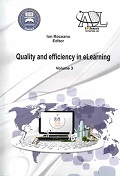SOFTWARE SOLUTION TO ASSESS MORPHOLOGICAL BODY THROUGH 3D SCANNING RESULTS
SOFTWARE SOLUTION TO ASSESS MORPHOLOGICAL BODY THROUGH 3D SCANNING RESULTS
Author(s): Elena Filipescu, Adrian Salistean, Emilia Filipescu, Sabina Olaru, Claudia NiculescuSubject(s): Education
Published by: Carol I National Defence University Publishing House
Keywords: assessment; pattern design; female population; clothing
Summary/Abstract: In the activity of clothing realization in industrial system and based on user specific sizes (customized clothing), it is very important for the pattern designer to operate with a maximum amount of information about potential users’ body shape. At the stage of establishing the necessary database, it is necessary that the pattern designer to assess swiftly and accurately the morphological features of the customer in order to design patterns in terms of efficiency, high quality and accuracy. Current performance of CAD systems have specialized modules such as MTM module in Gemini Pattern Editor program, allowing the development of clothing based on individual sizes of the customers, through the adaptation of algorithms structure for calculating the construction segments to concrete form of the body surface of different users. CAD systems performances are joined by 3D scanning technology development that results in storing a large number of anthropometric sizes used in improving current technology of constructive designing for clothing. In this context, it explains the permanent concern of specialists in the field of constructive designing of clothing to improve the entire process, from initial database creation to its operation so that the outcome of this process will ensure recipients with clothing products correlated with morphological features of users. This paper aims to develop a software solution center on a relatively small number of anthropometric sizes taken on any subject, to allow the pattern designer to evaluate objectively and in a very short time: body type (standard dimensions) and morphological features: posture, size and conformation to any subject "i". In order to develop the mathematical model, it was necessary to establish a database that assesses the morphological features of the automated test subjects.
Journal: Conference proceedings of »eLearning and Software for Education« (eLSE)
- Issue Year: 9/2013
- Issue No: 03
- Page Range: 391-397
- Page Count: 7
- Language: English

